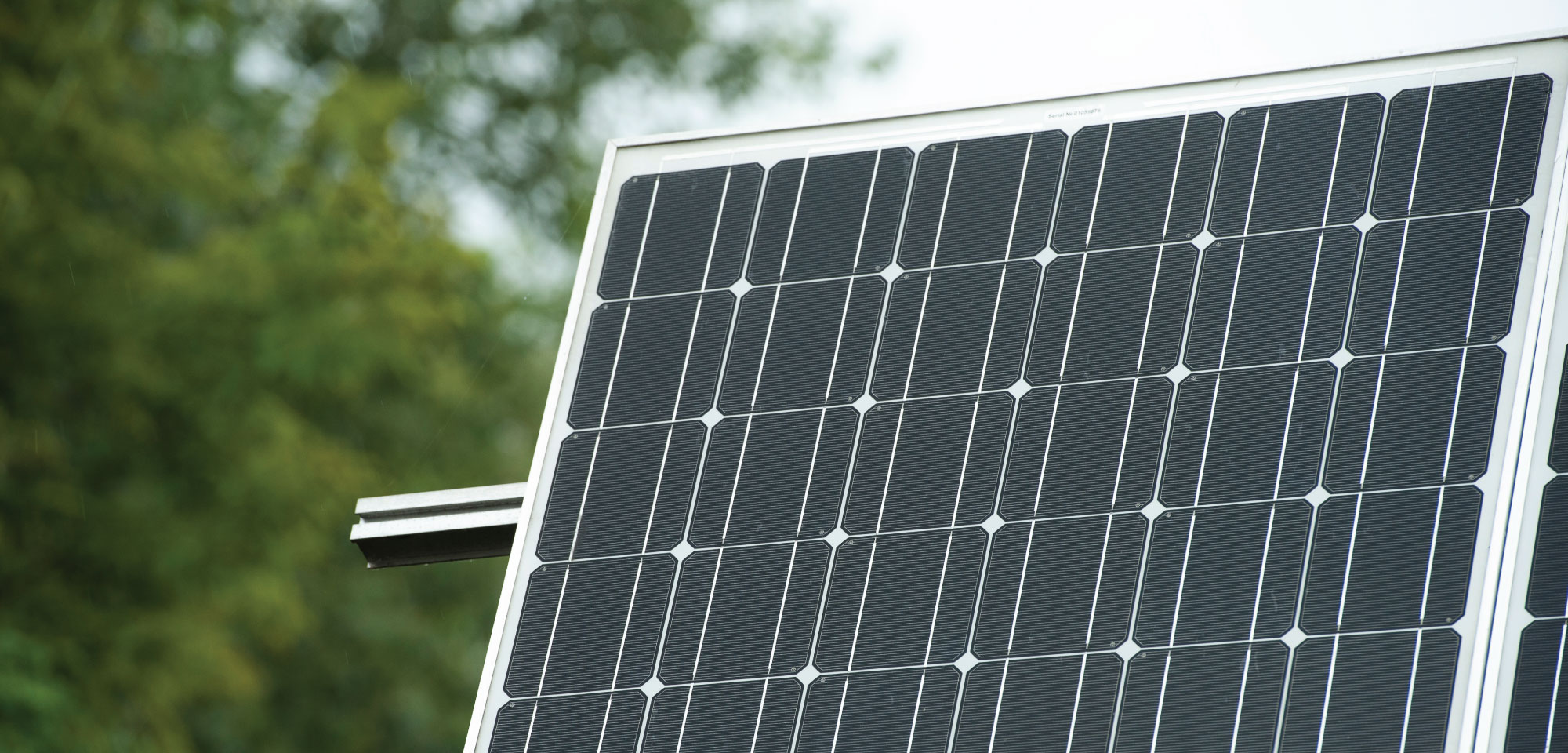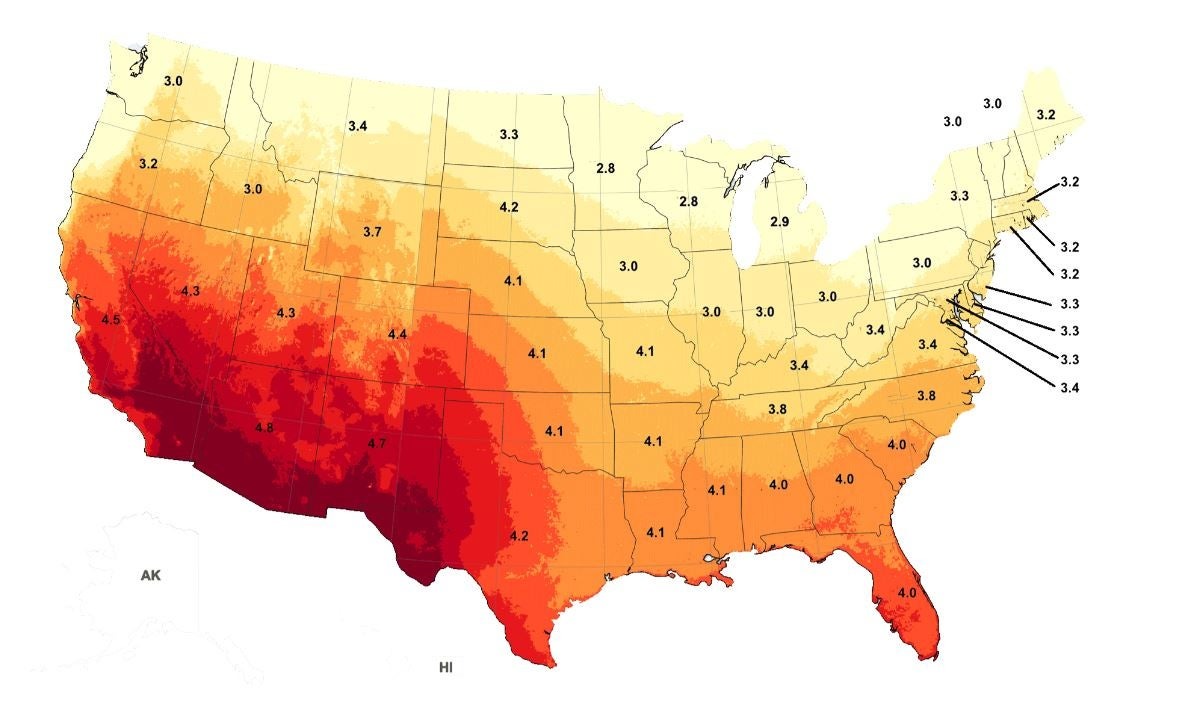
Find out what solar panels cost in your area
Calculating the right sized solar panel for your solar system can be a daunting process. Our 300-watt panel guide is a great place to view pricing and gain a better understanding of how many panels your home needs.
While 300 watts is still a common panel size for home installations, a lot of top tier brands such as Panasonic, LG, and SunPower no longer stock 300 watt panels. This is because advancements in solar cell technology has allowed some panel manufacturers to create panels at around 400 watts.
If you’ve looked into 300-watt solar panels for off-grid applications two brands you have likely come across are Renogy and Grape Solar. In this blog, we’ll explain everything you need to know about 300-watt 24 volt monocrystalline solar panels.
300-watt solar panel prices
Brand | Model | Voltage | Panel wattage | Price |
|---|---|---|---|---|
Renogy | RNG-300D | 24v | 300 | $307 |
Grape Solar | GS-M60-300-US | 24v | 300 | $350 (2 for $700) |
Two of the leading 300-watt solar panel brands, Renogy and Grape Solar, have comparable prices - with only a small difference in cost.
300-watt solar panel warranties
A great way to judge a solar panel is by its warranty. Here you can see Renogy and Grape Solar warranties:
Brand | Product warranty | Performance warranty |
|---|---|---|
Renogy | 10 years | 25 years |
Grape Solar | 10 years | 25 years |
Check out customer reviews of both Renogy and Grape Solar photovoltaic solar panels.
How much power does a 300-watt solar panel produce?
The amount of electricity produced by a solar panel depends on the size of the panel, the amount of sunlight the panel gets, and the efficiency of the solar cells inside the panel.
For example, if a 300-watt (0.3kW) solar panel in full sunshine actively generates power for one hour, it will have generated 300 watt-hours (0.3kWh) of electricity.
Unfortunately, a 300-watt solar panel will rarely output 300 watts at any one time. This is because a panel’s rated output is assigned based on how the panel performs in “standard test conditions”.
Standard test conditions (STC) involve shining a very bright 1000 watt light at a panel in a room of only 5 degrees Celsius (41 degrees Fahrenheit), and this is a very unrealistic scenario.
To gain a realistic understanding of a 300-watt panel’s output we should look at a solar irradiation map of the US. This map tells us how many kWh of power is produced from 1kW of solar panels in different regions of America. To work this out for a 300-watt panel we simply multiply by 0.3.

If we use California as an example, we can multiply 4.5 x 0.3 to get an average daily output of 1.35kWh.
Why is panel voltage important?
For residential grid-connected solar systems, solar panel voltage isn’t important. Panel voltage only comes into the equation when dealing with batteries in an off-grid scenario.
Most batteries have a set voltage of 12, 24, or 48 volts. What most off-grid systems will have is what’s called a “charge controller”. A solar charge controller reduces the voltage and amps to the battery's rated voltage. The charge controller also stops your batteries from being overcharged because overcharging batteries drastically reduces their lifespan.
How many 300-watt solar panels do I need?
This of course depends on your electricity usage. To appropriately size an off-grid solar panel system it is important to first calculate your AC and DC loads.
Most household appliances run off AC (alternating current). For this to occur an inverter must also be installed to convert the DC (direct current) from the panels or batteries to the required AC.
Sometimes an inverter isn’t required if your setup is only powering DC loads, which is common for small rural cabins. You can also purchase DC lights, DC fridges and DC space heaters. These appliances can simply run off the battery bank without the need for an inverter.
For example let's say you have the following electric appliances:
4 x 15 watt 12 volts DC lights running 4 hours per day
24watt, 24 volts DC fridge running 24 hours
Television 60watts 120volts AC running for 3 hours
Since the AC loads require an inverter and most inverters are about 90% efficient, this means the AC loads will need to be multiplied by 1.1 to factor in losses.
By multiplying watts by the number of operating hours the combined electrical usage is 1,014 watt hours (1.014kWh) per day. For an off-grid system you want to be able to charge your batteries so that you can sustain your electrical needs for 3 days without recharging the batteries. This would mean a battery size of 3.042kWh is recommended.
Charging your battery would take 10 hours using one 300-watt solar panel, assuming perfect conditions. If we use the California example from earlier, we know a 300-watt panel will produce on average 1.35kWh per day. If you’re using 1.014 kWh a day, it would take over a month to completely charge your battery!
If you use two 300-watt panels and produce 2.7kWh per day, charging your battery would take just under two days - this option is recommended.
What factors influence a solar panel's output?
Shade of any type, from cloudy days to overhanging tree branches, can wreak havoc on the output of solar panels. Since solar cells are linked together, shade on one cell can affect the production of all the others
In the United States, it’s recommended that solar systems face true south for the best exposure to sunlight. Solar systems can face other directions, although output will be reduced by a maximum of 30%
The type of panel you choose will affect the efficiency of the system. Monocrystalline, polycrystalline, and thin-film solar panels all provide different levels of efficiency with monocrystalline panels having high efficiency
Learn more: Types of solar panels: which one is best?
Most residential solar panels on the market feature output ratings ranging up to 400 watts, which makes a 300-watt solar panel on the higher end of the range in terms of power.
If 300w solar panels are what you have your eye on, do some in-depth research, talk to solar installers, and enjoy substantial electric bill savings, courtesy of your new rooftop solar power system.
Alex Sendy is a content writer and valued team member at SolarReviews. As the son of a solar company owner, Alex since a young age has had a strong appreciation for the environment and renewable energy. When he's not at SolarReviews you can find him playing soccer or homebrewing....
Learn more about Alex Sendy